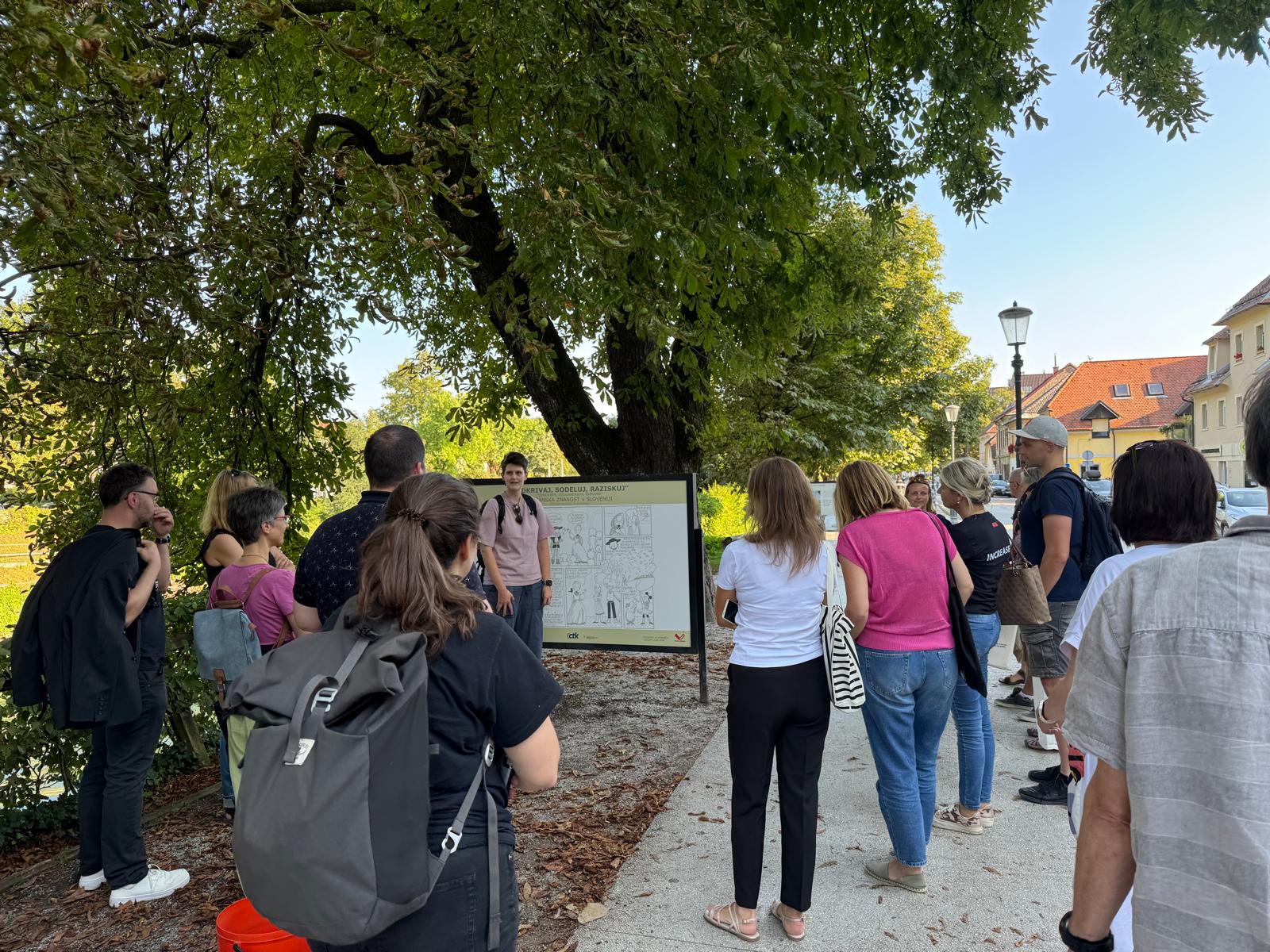
A curious case of Slovenian citizen science community
Zarja
Oct. 15, 2025, 11 a.m.
Zarja Muršič | ECS Ambassador for Slovenia
Imagine a community of curious people with whom you enjoy exploring all fields of science and sometimes even actively participate in science no matter your background. When I first heard of citizen science my first thought was that this is what science needs to be: open, accessible, full of curiosity. While I understand that high-quality science relies on precision, sophisticated tools, and expert knowledge, every research project starts with questions that anyone can explore with a little support, or even completely on their own.
I have been working as a science communicator for some time before I became involved in citizen science. I have done a fair share of one way communication with podcasts and written articles. I have even joined and organised roundtable debates and dialogues with people about science. But when I encountered citizen science I was pulled in by the participation aspect of it.
When I think about people not trusting science, I am usually not surprised. I ask myself why would you trust a random person you have nothing in common with who is telling you to take a vaccine or stop using your car as much as you do to protect the environment. The world of science is very closed and inaccessible to a majority of the public. Through citizen science anyone can join in, they can become the scientists themselves and they receive guidance and collaborate with people with scientific expertise. Together with professional scientists, they gain new knowledge, build skills, and deepen their understanding of the world. This is why I am a proud member of the Slovenian Network of Citizen Science.
During the summer we showcased more than 30 different citizen science projects in Slovenia through an exhibition next to the river that runs through the capital, Ljubljana. We showcased projects related to geology, archeology, biology, environment, history, computer science and democratization of learning. To my surprise on the day of the opening more than 100 curious people showed up to celebrate citizen science and the community we built over the last three years. We also hosted two rounds of guided tours of the exhibition led by the leads of the showcased citizen science projects. On all of these occasions many members of the community remained by the river side to chat. The air was filled with discussions about earthquakes, historical statues, cyanobacteria and green paths to commute by bike, and much more.
In more formal settings we organise a yearly day of citizen science aimed at researchers. We have jointly investigated how to move citizen science from theory to practice. This year we are organising an event on how to move citizen science even closer to diverse publics. We will host a citizen science fair where more than 20 projects will present themselves at the citizen science day in a public library in Nova Gorica. We will also host two workshops, one for adults on how to join in and become citizen scientists and one for children on space exploration.
The Network has successfully cultivated a dynamic community of researchers and practitioners, evidenced by the 80 citizen science projects currently listed. This foundational infrastructure has enabled the network to activate crucial debates, particularly concerning the sustainable funding, long-term viability of citizen science initiatives and increase the visibility of citizen science in Slovenia.
We acknowledge that carrying out citizen science projects and building the community of practitioners and citizen scientists requires time, funds and patience. The challenges we face include the need for more stable funding for citizen science projects and the necessity of establishing effective metrics to measure the societal impacts of citizen science. We plan to cover these debates further in the next year. Through all these activities we can move a step closer to citizen science becoming a vital part of the Slovenian scientific landscape.In the future we will build on what we have already established and enable anyone to dip their toes into science even if just for a little bit.